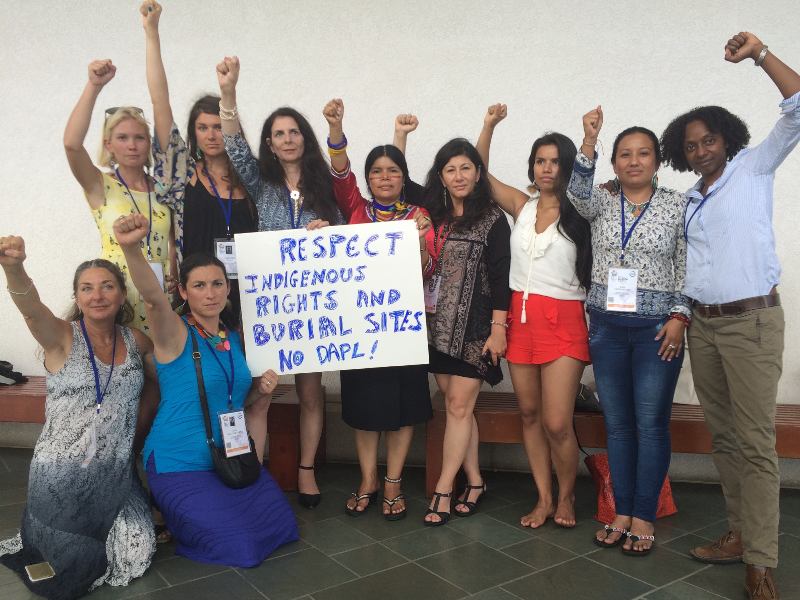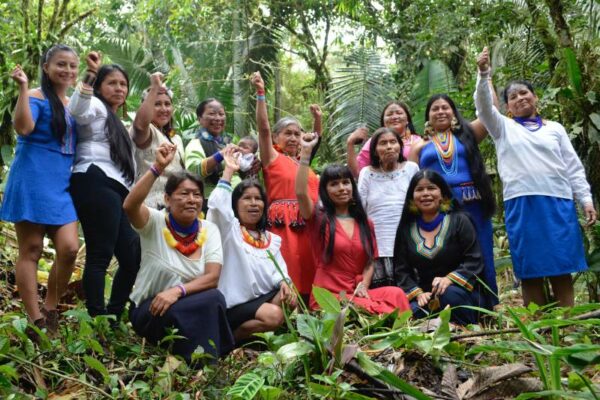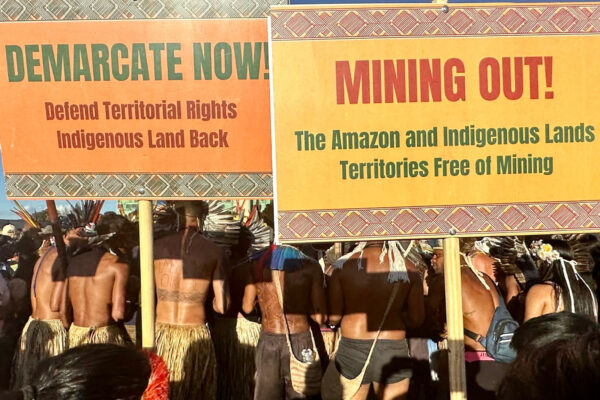
“Whatever fine print comes out of the World Conservation Congress, Amazonian indigenous women will continue to protect our Living Forest.” Paty Gualinga, the powerful spokeswoman from Ecuador’s Kichwa indigenous community of Sarayaku, inspired the attendees at one of the world’s largest gatherings of environmental organizations and governments. Her presence in Hawaii implied that the Congress is a strategic international policy space for promoting indigenous rights, but ultimately grassroots resistance is where indigenous peoples are often able to make a decisive difference.
At the same time, events in North Dakota underscored Paty’s point that local action is necessary to protect indigenous rights. The growing movement to stop the Dakota Access Pipeline, led by the Standing Rock Sioux, is gathering public attention but also facing increasing repression. Indigenous delegates to the Congress viewed footage of vicious dogs attacking native protectors, reacting with shock and outrage. In shows of solidarity, indigenous guardians and allies sent visual messages via social media to demonstrate moral support in these tense moments.
The “fine print” to which Paty referred are resolutions adopted by the International Union for the Conservation of Nature. A coalition of indigenous sacred site guardians are currently advocating for one such resolution, known as Motion 26, which would help elevate “sacred natural sites” toward a protected area designation as “No Go” zones for extractive industries. Seen as the most controversial of the Congress’ motions because it directly challenges corporate power, it is slated for debate tomorrow, Friday, September 9th.
The effort, being coordinated among many organizations and indigenous delegations, includes behind-the-scenes discussions with big conservation NGOs and governments, public advocacy by indigenous spokespeople, and a social media effort built around the hashtag #VoteForIUCNMotion26. The global network of sacred site guardians worked diligently to draft and issue this statement. Though it is a non-binding resolution and IUCN has little power to compel governments to comply, Motion 26 would offer activists a tool to push for additional protection of sacred sites back home.
Ultimately, the battle to defend sacred sites will rage on in thousands of locations around the world. Indigenous guardians will use every tool at their disposal to protect the places that guarantee the survival of their culture and spirituality. Conservation organizations and the IUCN should support those efforts. Rights-based organizations like Amazon Watch have stood by them and will continue to do so.













